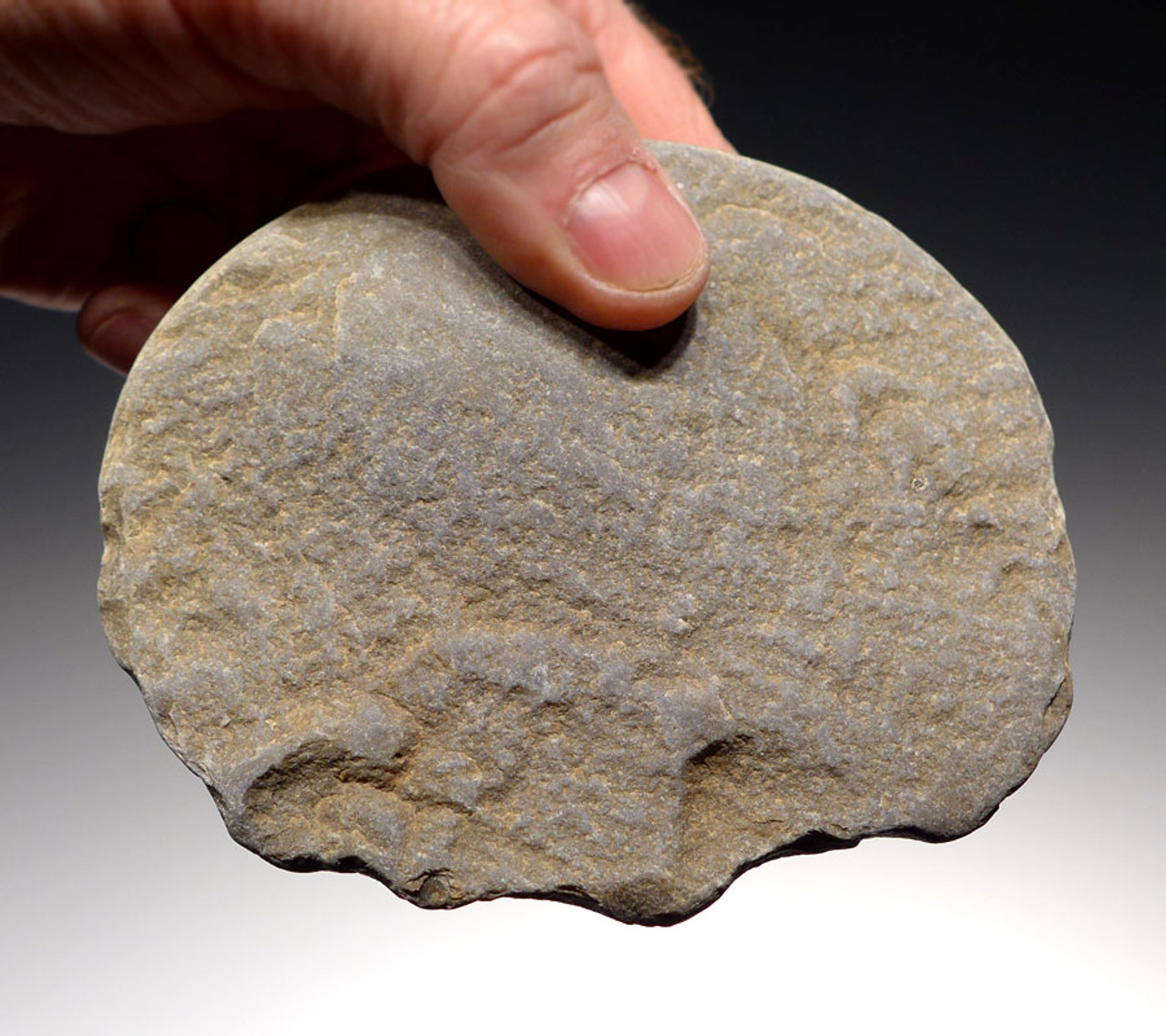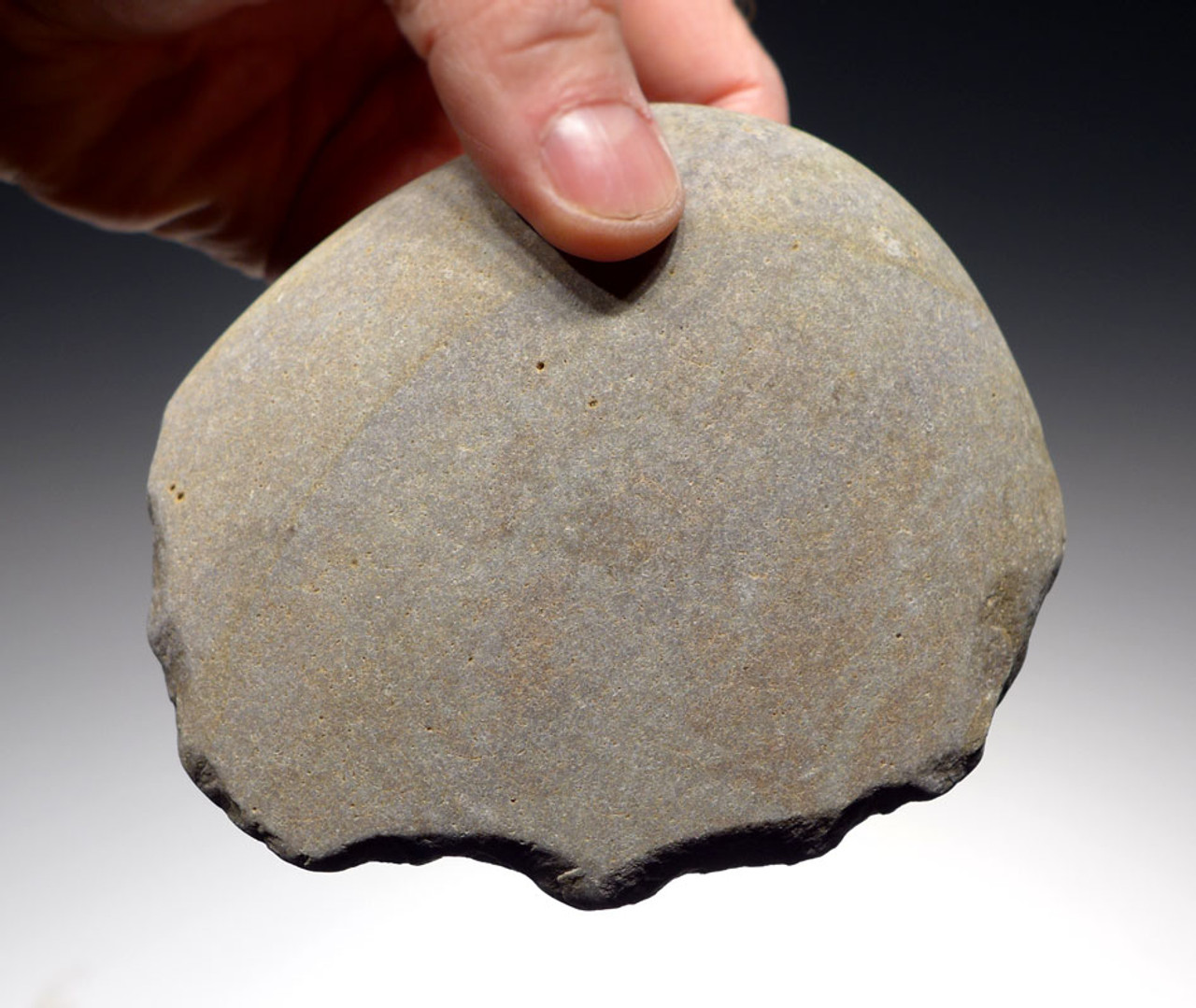Product Description
This is a very scarce, large Oldowan pebble scraper from the European Lower Paleolithic Period. It is a discoidal unifacial scraper made on a large flake struck from a quartzite cobblestone. Aside from the extensively sharpened, flaked cutting edge, another obvious trait of human manufacture is the pronounced bulb of percussion on the inner side. Stone flakes made by environmental forces such as frost or glacier tumbling, never produce flakes with off-center bulbs of percussion. Such a feature is indicative of a human strike on the core to produce a flake for flake tool manufacture.
A large, robust flake such as this would have been ideal in scraping and de-fleshing large hides of mammoth and bison, for example. It fits extremely well in the hand and has a broad cutting edge with a TEXTBOOK PERFECT example of SECONDARY RETOUCHING - the flaked edge all around the distal end. For any Paleolithic tool collection, this is a must have specimen as European Oldowan FLAKE tools are seldom seen for sale in the public market. Traits only seen in authentic Paleolithic stone tools are present on this example such as a lack of any modern crushing, and sediment / patina deep in microscopic crevices.
HISTORY
The Oldowan pebble tool tradition, named after the Oldowan Gorge in Kenya, East Africa where tools were first described, represent stone tools from the earliest primitive humans. By the time early humans made their way into Europe, PEBBLE TOOL technology had already been superseded by the proliferation of Acheulian bifacial handaxes roughly three quarters of a million years later in Africa! These stone tool manufacturing traditions were brought into Europe by Homo erectus moving north up from Africa. Both Pebble and Acheulian traditions existed for a limited time together at the beginning of human existence in Europe with pebble tool technology eventually giving way to more advanced traditions of core and flake tools.
WARNING: There are a host of these "tools" for sale on Ebay and other websites providing less information and understanding of Lower Paleolithic specimens. Many of these sources offer nothing more than damaged ancient river cobbles caused by environmental action (glacial disturbance, frost damage, etc.) or modern made fakes. Every broken cobblestone found is NOT a human-created Paleolithic tool! The determination of what is man-made and what is an ordinary broken river rock requires a very high level of understanding Paleolithic tool manufacture and technique as well as the experience to be able to differentiate the two and authenticate a genuine stone tool from this culture. Know your source and only deal with well-informed sellers who can help you understand the difference.
No one can doubt the importance that pebble tools hold in the history of human development. Their very emergence in Africa nearly two million years ago allowed the earliest humans to butcher animals for their meat - the needed nourishment that allowed humans to survive and flourish to one day populate and rule the earth.
 US DOLLAR
US DOLLAR
 EURO
EURO
 AUSTRALIAN DOLLAR
AUSTRALIAN DOLLAR
 CANADIAN DOLLAR
CANADIAN DOLLAR
 POUND STERLING
POUND STERLING




















